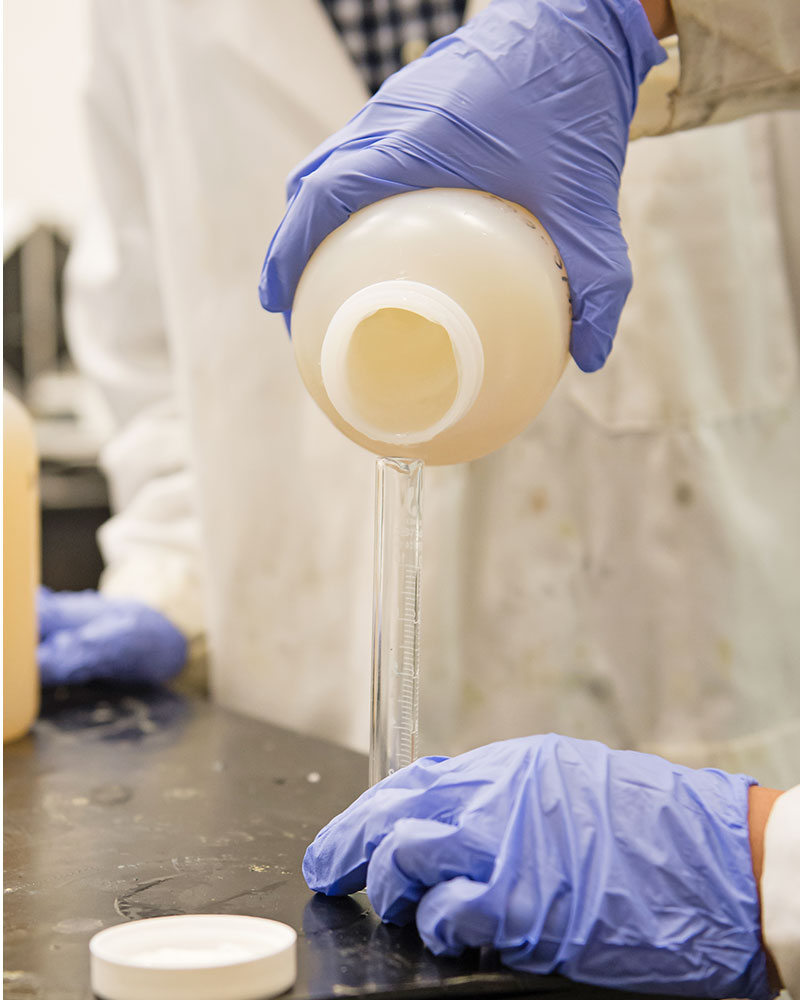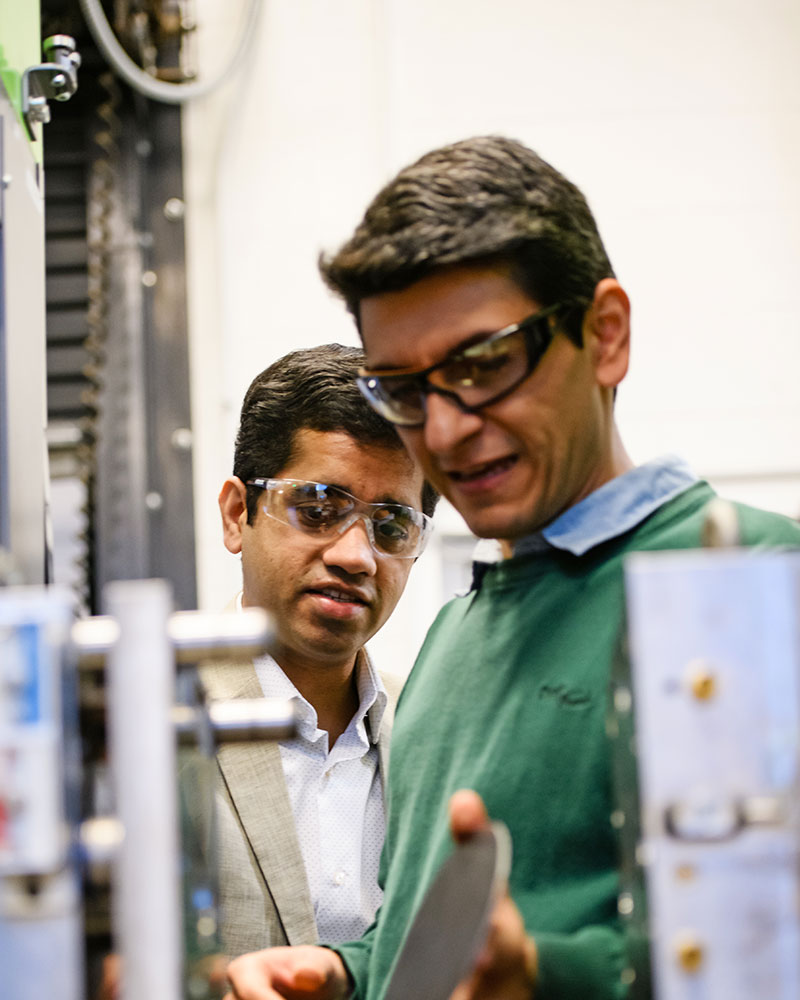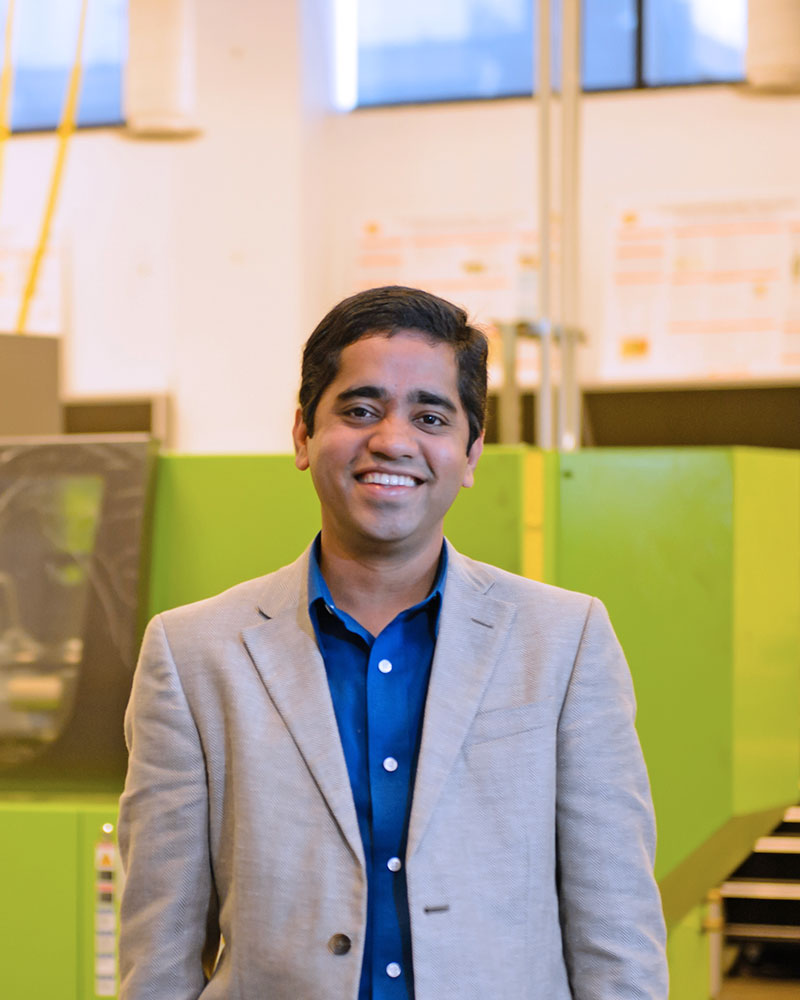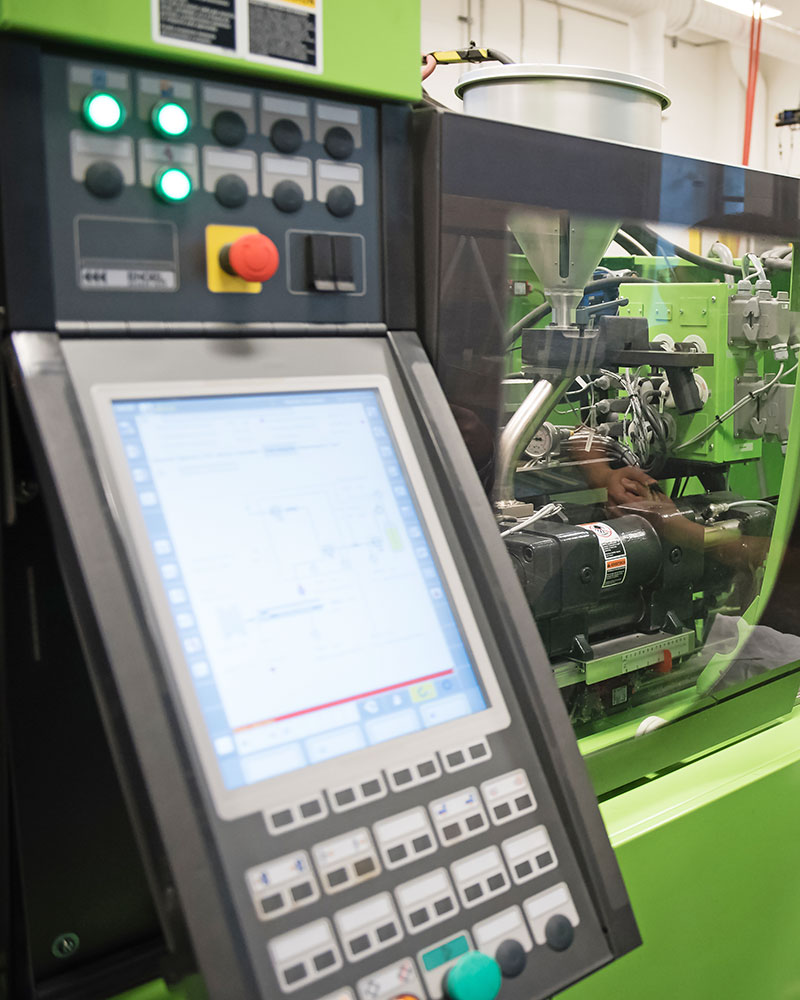Streamlined manufacturing cost savings with hybrid single-shot process for metals and composites
NEW TECHNOLOGY THAT WAS INVENTED AT CLEMSON UNIVERSITY could help reduce the time and cost it takes to manufacture components that are composed of different materials and need to be joined together, researchers said. Even better, the process could be automated with the help of artificial intelligence, they said.
INDUSTRY 4.0
Srikanth Pilla and Saeed Farahani are calling their technology “hybrid single-shot manufacturing of metals and composites.”
It’s aimed at streamlining the manufacturing of some components, such as the center consoles in high-end cars, said Pilla, the Jenkins Endowed Professor in the Department of Automotive Engineering and the founding director of Clemson Composites Center.
GOALS AND METHODOLOGY
One of the goals is to reduce the cost of making vehicles lighter, which improves their mileage and helps automotive companies meet federal fuel efficiency standards. But researchers said the technology could be used in a variety of industries, including home appliance manufacturing.
The technology could be ready for the manufacturing floor in as little as two years, Pilla said.
When some parts are made conventionally, one machine stamps sheet metal into the desired shape, and another machine creates polymer or composite parts. Then the pieces are bonded together with glue.
In hybrid single-shot manufacturing, it’s all done in one machine. The technology can be used in existing equipment, obviating the need for major capital investment, Pilla said.
The new method could reduce infrastructure costs and cycle time, while helping ensure that the pieces are mistake free and fit snugly together.
Pilla illustrated the work with a half-moon-shaped piece of polymer that was embedded in a rectangular piece of sheet metal.
“We are shooting the polymer into the sheet metal, and that is deforming the sheet metal,” he said. “While it’s deforming, it’s also bonding to the sheet metal. So, it’s one single operation.”
Farahani moved to Greenville from Tehran Polytechnic to work under Pilla as a Ph.D. student at the Clemson University International Center for Automotive Research.
“When I found this research topic in the literature, I thought, ‘This is going to be perfect for me,’” Farahani said. “My academic background is metal forming, but my experience is mostly on composite and plastic tool design. So with this subject, I can combine these two together.”
Pilla said the team’s approach to the research is unique.
“Maybe one or two research groups in the world have been working on this, but they are all looking at it from the metals side,” he said. “We actually flipped the problem, and we said, ‘This one people will do, and it’s easy to do because sheet metal has a pretty established methodology.’
“Also, my expertise is in polymers and composites, so it makes sense to investigate the problem by flipping it.”
As part of the research, Farahani built a “concept design tool,” and covered it with sensors that measure everything from temperature to pressure. He also created his own software that allows researchers to create a computer model of the machine’s process, also called a “digital twin.”
The digital twin coupled with artificial intelligence is playing a crucial role in teaching the machine to operate on its own.
For the tool to learn, it needs to make mistakes. But allowing the tool to run hundreds of cycles would be too expensive.
Instead, researchers have conducted a limited number of experiments with the machine. Now they are feeding data from the experiments into the machine’s digital twin, along with physics-based models that helps the machine understand its limitations.
“We are saying that science has limits, and these are the limits for you,” Pilla said of the message to the machine. “Then the machine will know what it’s capabilities are and accordingly it will try to learn by itself.”
The research helped Farahani secure his Ph.D. in automotive engineering in December. He is continuing this work as a postdoctoral researcher in Pilla’s lab to further refine the digital twin.
Researchers also plan to test the new technology at the Clemson Composites Center with the goal of making real components.
Publication Links
- Numerical Simulation for the Hybrid Process of Sheet Metal Forming and Injection Molding Using Smoothed Particle Hydrodynamics Method
- Feasibility Study for Manufacturing CF/Epoxy – Thermoplastic Hybrid Structures in a Single Operation
- Clemson University Automotive Engineers Invent ‘Single-Shot’ Manufacturing Technology





